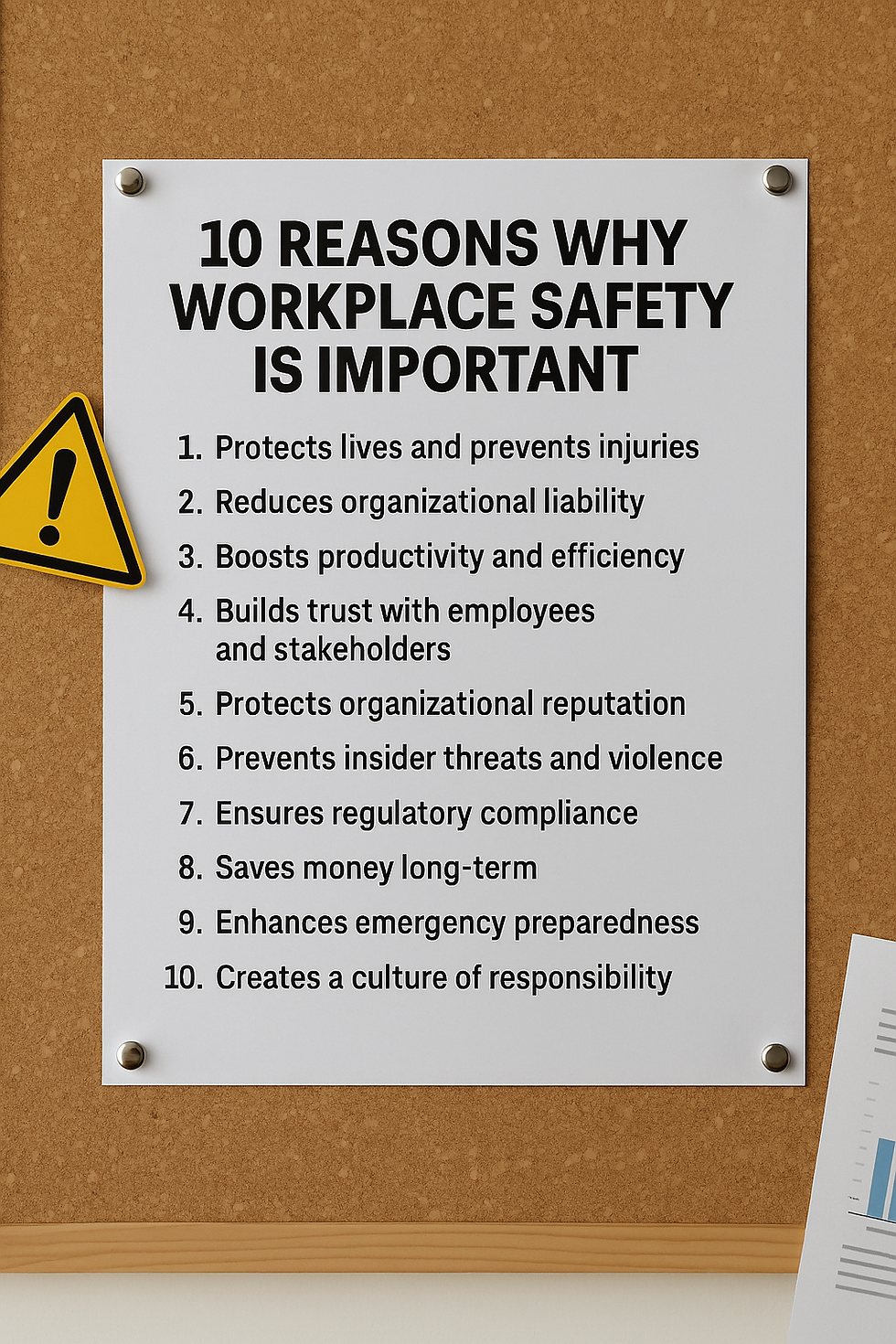What Are the 5 Things a Hospital Security and Safety Risk Assessment Should Include?
- CrisisWire

- Sep 27
- 2 min read
Hospitals are among the most vulnerable institutions in America. They’re open 24/7, filled with high-value equipment, and home to some of the most sensitive populations: the sick, the elderly, and the newborn. Add in rising cases of workplace violence against healthcare workers, insider threats, and cyber-physical attacks, and the need for robust hospital risk assessments becomes urgent.
A comprehensive hospital security and safety risk assessment should always include five critical areas:

1. Access Control and Visitor Management
Hospitals often function as “open campuses,” which makes controlling entry points essential. Assessments must review:
Badge systems for staff and contractors.
Visitor check-in protocols (photo ID, temporary badges).
Escorts for restricted areas like NICUs, pharmacies, or surgical wings.
🔗 For more on access control, see Locked Down: The Access Control Blueprint for Safer Schools, Colleges, and Corporate America — its principles apply directly to healthcare.
2. Emergency Preparedness and Continuity Planning
From natural disasters to mass casualty incidents, hospitals can’t afford downtime. Risk assessments must evaluate:
Emergency Operations Plans (EOPs).
Evacuation and shelter-in-place protocols.
Continuity of operations (COOP) to keep critical functions running even under crisis.
📘 Expanded frameworks appear in The Prepared Leader.
3. Workplace Violence and Insider Threats
Healthcare workers are five times more likely to suffer workplace violence than employees in other industries. A thorough risk assessment should examine:
Behavioral Threat Assessment (BTA) procedures.
Incident reporting systems for staff.
Insider threat safeguards for staff with access to sensitive areas or data.
4. Cybersecurity and Physical System Integration
Hospitals rely on electronic medical records, IoT-enabled devices, and digital access control. Risks rise when cyber and physical systems overlap. Assessments must cover:
Protection of networked medical devices.
Segregation of critical access systems.
Response planning for cyber-physical attacks.
5. Regulatory Compliance and Training
Hospitals face a maze of compliance requirements — from OSHA and CMS to HIPAA and Joint Commission standards. Assessments must include:
Compliance audits.
Annual safety and security training.
Drills that measure staff readiness against real-world threats.
A hospital risk assessment is more than a regulatory box-check. It is the first line of defense against violence, disruption, and catastrophic liability. By focusing on access control, preparedness, workplace violence prevention, cybersecurity, and compliance, leaders can move their hospitals from vulnerable to resilient.
📩 To schedule a hospital risk assessment or emergency planning session, contact CrisisWire Threat Management Solutions at crisiswire@proton.me.





Comments